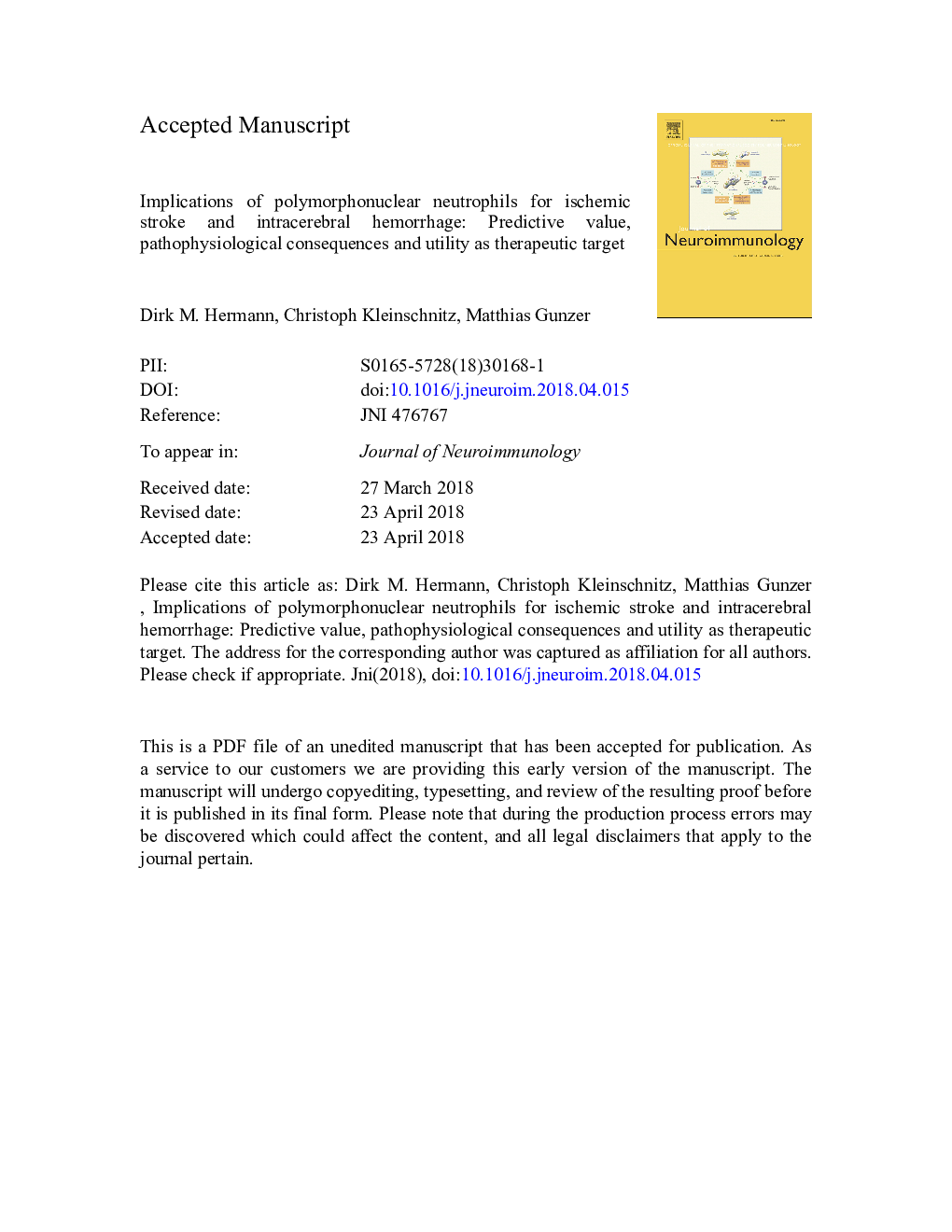| کد مقاله | کد نشریه | سال انتشار | مقاله انگلیسی | نسخه تمام متن |
|---|---|---|---|---|
| 8685686 | 1580354 | 2018 | 20 صفحه PDF | دانلود رایگان |
عنوان انگلیسی مقاله ISI
Implications of polymorphonuclear neutrophils for ischemic stroke and intracerebral hemorrhage: Predictive value, pathophysiological consequences and utility as therapeutic target
ترجمه فارسی عنوان
پیامدهای نوتروفیل های پلی مورفونیکال برای سکته مغزی ایسکمیک و خونریزی داخل مغزی: ارزش پیش بینی کننده، پیامدهای پاتوفیزیولوژیک و کاربرد آن به عنوان هدف درمانی
دانلود مقاله + سفارش ترجمه
دانلود مقاله ISI انگلیسی
رایگان برای ایرانیان
کلمات کلیدی
ادم مغزی، ایسکمی مرکزی مغزی ماکروفاژ، مونوسیت، عصب خونی آسیب مجدد
موضوعات مرتبط
علوم زیستی و بیوفناوری
ایمنی شناسی و میکروب شناسی
ایمونولوژی
چکیده انگلیسی
Polymorphonuclear neutrophil granulocytes (PMN) orchestrate the removal of cell debris in ischemic stroke and intracerebral hemorrhage. In both pathologies, high neutrophil to lymphocyte ratios in peripheral blood are predictive of poor outcome in human stroke patients. Following earlier studies indicating that the cerebral microvasculature forms an efficient barrier that impedes neutrophil brain entry, intravital microscopy and immunohistochemistry in the meantime unequivocally revealed the accumulation of PMN in the ischemic and hemorrhagic brain parenchyma. These studies provide definite evidence that PMN contribute to the degradation of the blood-brain barrier, predisposing the brain to secondary injury, edema, hemorrhage formation, hemorrhage growth and poor neurological recovery. Recent studies demonstrated the role of pro-inflammatory N1 neutrophils in brain edema and neurotoxicity, whereas anti-inflammatory N2 neutrophils were found to limit this excessive immune response, promoting neuronal survival and successful brain remodeling. In view of the recent failure of anti-inflammatory immunotherapies in clinical trials, strategies specifically modulating the brain accumulation, differentiation and action of PMN may open promising perspectives for stroke treatment.
ناشر
Database: Elsevier - ScienceDirect (ساینس دایرکت)
Journal: Journal of Neuroimmunology - Volume 321, 15 August 2018, Pages 138-143
Journal: Journal of Neuroimmunology - Volume 321, 15 August 2018, Pages 138-143
نویسندگان
Dirk M. Hermann, Christoph Kleinschnitz, Matthias Gunzer,
